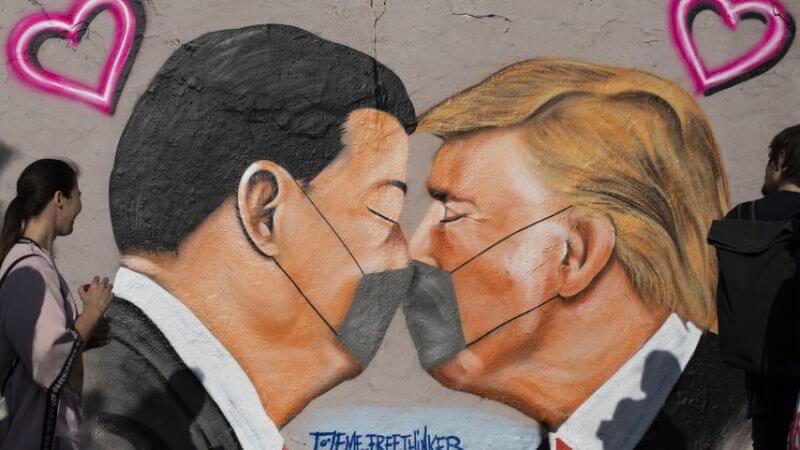The US and China announced that they would resume phase one of trade talks this weekend, despite deteriorating relations. The two sides signed an agreement earlier this year easing restrictions on imports. “Both sides will be doing a temperature check to see where things stand since January, and indeed they have a lot to talk about,” said Nick Marro, a global trade expert at the Economist Intelligence Unit (EIU).
Beijing and Washington are embroiled in a trade war since 2018, with retaliatory tariffs from both sides. Differences in trade appeared to have eased when the two states put into place an agreement six months earlier, with China committing to increase imports from the US. However, according to a report by the Peterson Institute for International Economics, China has failed to meet the targets outlined in the agreement. Using official data from China and the US, the report states that China should buy $142.7 billion American goods by the end of the year. However, in the first half of 2020, China bought less than a quarter of the targeted amount.
Trade experts have maintained that the targets detailed in the January agreement were unrealistic. The coronavirus further exacerbated the unfeasibility of achieving the desired trade goals. This explains why President Trump’s chief economic advisor Larry Kudlow said that China’s purchases of American goods “are really good numbers.”
The US-China trade war has impacted the world and even resulted in certain countries such as Japan, South Korea, and India initiate decoupling from China by diversifying their respective supply chains. China, for its part, has begun implementing policies to improve its trade relations with other regions, specifically the ASEAN nations. For instance, Beijing reduced its tariffs for imported products from Myanmar, Cambodia and Laos under the Preferential Trade Program. The advent of the new policy would permit up to 97% of all products from these countries to be imported into China duty-free. Such a policy provides smaller economies within ASEAN with an opportunity to take advantage of the Chinese market, a significant development in light of other countries trying to decouple from Beijing’s economy.
Apart from the ensuing trade war between China and the US, other flashpoints have also emerged. These include the enactment of the security law in Hong Kong, the US Health Secretary’s visit to Taiwan, the US State Department designating Confucius Institute US Center (CIUS) as a foreign mission, and America’s blacklisting of Chinese companies such as TikTok, Huawei and We Chat. The resumption of trade talks against the backdrop of these concerns signals a way forward, with Kudlow, the director of the White House’s National Economic Council, assuring that trade was the one area the two nations were engaging on. Likewise, China’s Assistant Minister of Commerce Ren Hongbin said, “Under the current situation, it is required that both sides need to work together and step up cooperation to overcome the difficult times. We hope the US would stop taking any restrictions and discriminatory action against Chinese companies and create conditions for the implementation of the Phase 1 trade agreement.”
A survey conducted by the China General Chamber of Commerce-USA(CGCC) revealed some 19% of respondents being unsatisfied or very unsatisfied with the US investment and business environment. Ni Pin, president of Wanxiang America Corporation and chairman of CGCC Chicago said: “Let business become the stabiliser for the relationship.” The resumption of talks between the US and China indicates a significant step towards future engagement and a more conducive business environment.
US, China to Resume Trade Talks Despite Growing Tensions
Beijing and Washington have been embroiled in a trade war since 2018.
August 14, 2020

Street art shows US President Donald Trump and Chinese President Xi Jinping wearing protective mask and kissing at a section of the former Berlin Wall. SOURCE: GETTY IMAGES
